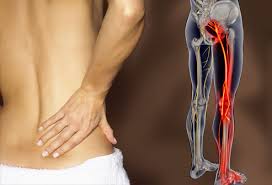The lower back is an intricate structure of interconnected and overlapping elements:
Tendons and muscles and other soft tissues
Highly sensitive nerves and nerve roots that travel from the lower back down into the legs and feet
Small and complex joints
Spinal discs with their gelatinous inner cores.
An irritation or problem with any of these structures can cause lower back pain and/or pain that radiates or is referred to other parts of the body. Pain from resultant lower back muscle spasms can be severe, and pain from a number of syndromes can become chronic.
While lower back pain is extremely common, the symptoms and severity of lower back pain vary greatly. A simple lower back muscle strain might be excruciating enough to necessitate an emergency room visit, while a degenerating disc might cause only mild, intermittent discomfort.
Identifying the symptoms, along with an accurate diagnosis of the underlying cause of the pain, is the first step in obtaining effective pain relief.
Source: spine health



